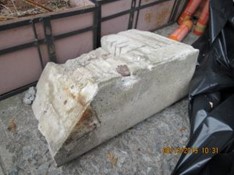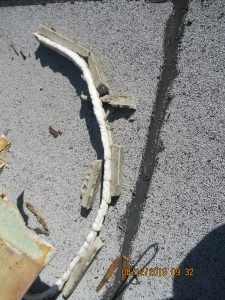In New York City, buildings greater than six stories tall are subject to the Façade Inspection and Safety Program (FISP). During the cyclical inspection, a building’s façade must be classified as one of the following options: Safe, Safe with Repair and Maintenance Program (SWARMP), or Unsafe. The definition of Safe is fairly straightforward and requires no immediate action. However, if a Qualified Exterior Wall Inspector (QEWI) recommends a SWARMP condition, that condition must be repaired within one year. If the SWARMP condition is not repaired in time, the condition must then be classified as Unsafe.
The New York City Department of Buildings (DOB) defines an Unsafe condition as the following:
- “A condition of a building wall, any appurtenances thereto, or any part thereof that is hazardous to persons or property and requires prompt repair. In addition, any condition that was reported as SWARMP in a previous report and that is not corrected at the time of the current inspection shall be reported as an unsafe condition.”
The classification of each condition on the building is subject to the professional judgement of the QEWI performing the façade inspection. When determining the classification, the wellbeing and safety of the public must be considered as a top priority. For example, if the QEWI observes loose brick that has dislodged from the façade and can easily be removed by hand, it should be removed immediately during the inspection to prevent hazardous debris from falling off of the building.

There are two parts of the FISP (formerly Local Law 11) inspection: (1) the visual inspection and (2) the physical inspection. When determining if conditions are classified as SWARMP or Unsafe, the physical inspection is extremely valuable and involves the installation of a supported or suspended scaffold, use of a boom lift, rope access, or access from a fire escape. This inspection allows the QEWI to touch the building elements and get a tangible idea of the conditions, such as the severity of deterioration, whether there is any spalling, and the formation of cracks in the building materials. In some cases, stains or discoloration may appear to be physically damaged when observed from the ground level. However, a close-up inspection of the elements helps the QEWI more accurately determine the façade’s condition.
One way of further evaluating a building condition is through sounding a building element with a hammer. This method can help determine whether the element is delaminating from the building and will likely become displaced in the near future, or if the damage on the building element is superficial. If the concrete sounds hollow when hit with a hammer, it should likely be classified as Unsafe. If there is no hollow sound, the damage is likely less severe. Sounding the substrate material can also be used to evaluate brick masonry and terra cotta elements. Terra cotta units often have hollow cores and therefore may not require repair if they sound hollow.
Identifying conditions as Safe, SWARMP, or Unsafe sounds simple enough, but there is often a grey area between defining SWARMP and Unsafe conditions. In some cases, the cause of a condition may not be apparent upon an initial inspection. Identifying the underlying conditions by using investigative probes is a great way to classify a condition with a higher degree of certainty. Probes are especially useful for locating structural reinforcement within a masonry wall and further determining the cause of displacement of masonry elements.

As mentioned above, a condition may be downgraded from SWARMP if the building owners do not complete repairs within the timeframe specified by the QEWI in the FISP report. When SWARMP conditions go unaddressed, they are reclassified as Unsafe. As per the building code, the building owner is then expected to address the Unsafe condition(s) immediately.
Ultimately, it is imperative for building owners and owner representatives to retain a QEWI to inspect buildings and file a FISP report for each cycle. Employing a qualified inspector to make realistic, accurate judgments on the conditions of deteriorated building elements can help prevent future damage and avoid greater costs. Rimkus has several experienced QEWIs on staff that are prepared to inspect New York City buildings for the FISP 9th Cycle. For more information, visit our Building Envelope Services page here.
